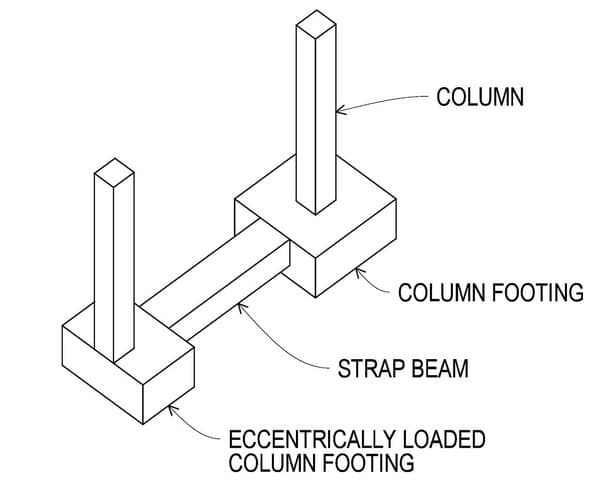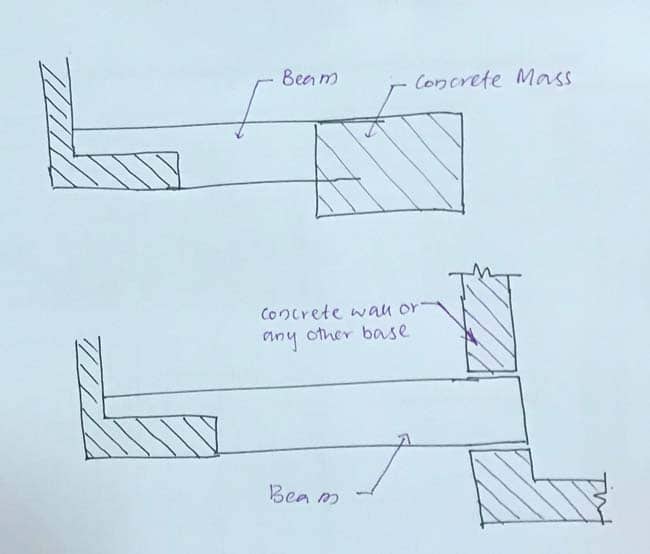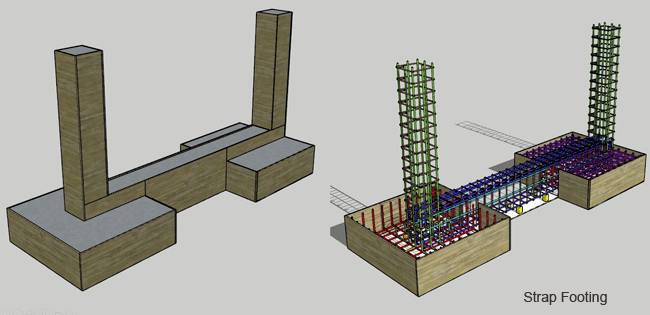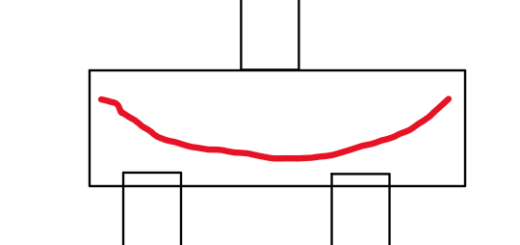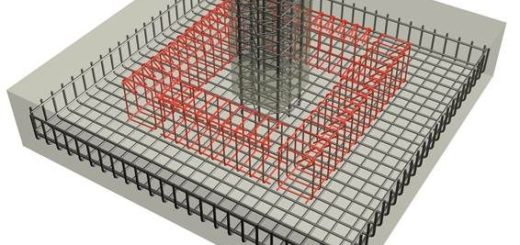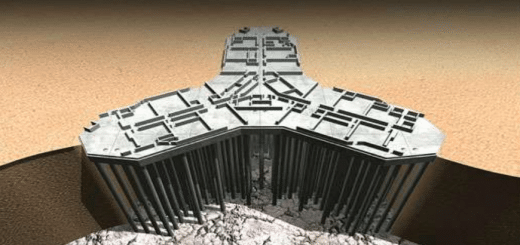Strap Footing types and design procedure
Strap footing is the type of footing constructed to connect the eccentrically loaded footing to interior column footing. Further, these types of footings can be identified as a combined footing as it connects two or more columns.
Strap footing is more common in building construction as we have to construct the building up to the boundary wall. We can not place our foundation in someone else land. Therefore, the column has to be placed at the edge of the footing. It creates load eccentricity.
To overcome this issue, a strap footing foundation is constructed and the induce bending moment and shear forces due to the eccentric load will be transferred to the interior column through the strap beam. There are special procedures to be followed in strap footing design which we discuss in the latter part of this article.
Also, it should be noted that these types of footings are considered as a type of spread footing.
Types of Strap Footing
The function of these types of footings is to transfer the bending and shear forces induced by load eccentricity. There are different methods used to transfer bending and share forces to the inner column or the restraining structure
Depending on the nature, we can categorize the strap footing types as follows.
- Strap beam connected to the footing supporting on the inner column
- Strap beam connected to the footing supporting on the inner wall
- Strap beam connected to the footing supporting on the counterweight.
Strap Beam Connected to the Inner Column
This is the most common type of strap footing foundation constructed to manage the load eccentricity. It is more convenient when compared to the other type of footings.
Connecting the strap beam to the inner column is the economical way compared to the supporting arrangements such as mass concrete block.
The common practice is to construct the strap beam connection to the footing and inner column foundation. Since we expected to reduce the stress concentration at the eccentrically loaded column, the continuation of the strap beam through the footing is the best practice as indicated in the left-hand side of the above figure.
Strap Beam Supporting on Inner Wall
There may not be inner columns always close by or perpendicular to support the strap beam. Therefore, we have to support the beam with whatever element is available. These strap footing types are also not widely seen in construction.
When there are reinforced concrete walls, we support the strap beam on the wall.
Depending on the thickness and the reinforcement arrangement of the wall, connecting detail of the beam and wall will be finalized. When a thin wall does not have much stiffness, we allow the rotation at the connection as indicated in the above figure.
If the supporting wall has a thickness of 225-300mm, we may connect the strap beam to the wall monolithically. The connection design shall be done with much care and attention shall be made to avoid the cracking of the wall. When there are very high loads, reinforcement detailing shall be done very carefully.
Furhter, when it is expected not to cast wall and beam monolithically, attention shall be made to the water tightness requirement. Especially, in water retaining structures, we could have cast the wall and beam monolithically.
Strap Beam Support on the Counterweight
When there is no element to support the strap beam, we may construct as mass concrete having the weigh more than the upward reaction induced by the footing.
The designer shall make special attention to all the possible load cases and the load case that creates the critical reaction shall be considered for the design.
Out of the three types of strap footing, we discussed in this article, the most common type is the strap beam connecting the inner column.
Why do we need Strap Footing?
- This is a type of foundation considered as a combined footing and shallow foundation constructed to manage the load eccentricity.
- If there is no strap beam connected to an isolated footing loaded at the edge of the footing, the pressure distribution under the foundation will not be uniform. There will be triangular pressure distribution and a considerable increase can be observed at the edge.
- An increase in this pressure could lead to bearing failure if it exceeds the allowable bearing capacity.
- Even if it does not exceed the allowable bearing pressure, still there is an issue of foundation settlement. Due to the stress concentration at the part of the footing/soil, there could be a higher settlement in footing as the whole area of the strap footing foundation is not effective.
- In this background, we construct strap foundations to overcome the above issues.
Strap Footing Design
The following procedure is to be followed when designing strap footing foundations.
The procedure discussed below is for edge footing connected to an interior column footing by strap beam.
- The select thickness of footing. This can be selected based on the experience of the designer.
- Calculate the total area required for both the footings
Areq. = F1 + F2 / qall where F1 – column load 1, F2 – column load 2, qall – allowable bearing capacity of soil
- Calculate the load center or the point at which the resultant force acting for both footings
- Calculation of the dimensions of the footings is challenging. Assume, the width of footings and calculate the other dimensions of two footings.
- Calculate the ultimate pressure under the footings.
- Calculate the being and share forces by considering the equilibrium.
Related Articles
- Combined Footing
- Spread Footing
- Shallow Foundations
- Pier Foundation
- Footing Foundations
- Deep Foundations
- Foundation Failure
- Underpinning
- Eccentrically Loaded Foundations
- Shallow Foundation Failure
- Pile Raft Foundations
- Mat Foundation
- Pile Foundation
- Driven Pile Foundations
- Pile foundations
- Uplift Pressure on Foundations
- How to Determine Foundation Type
- Excavation for Foundation
- Foundation Waterproofing
- Settlement of Shallow Foundations
- Slab Foundations

